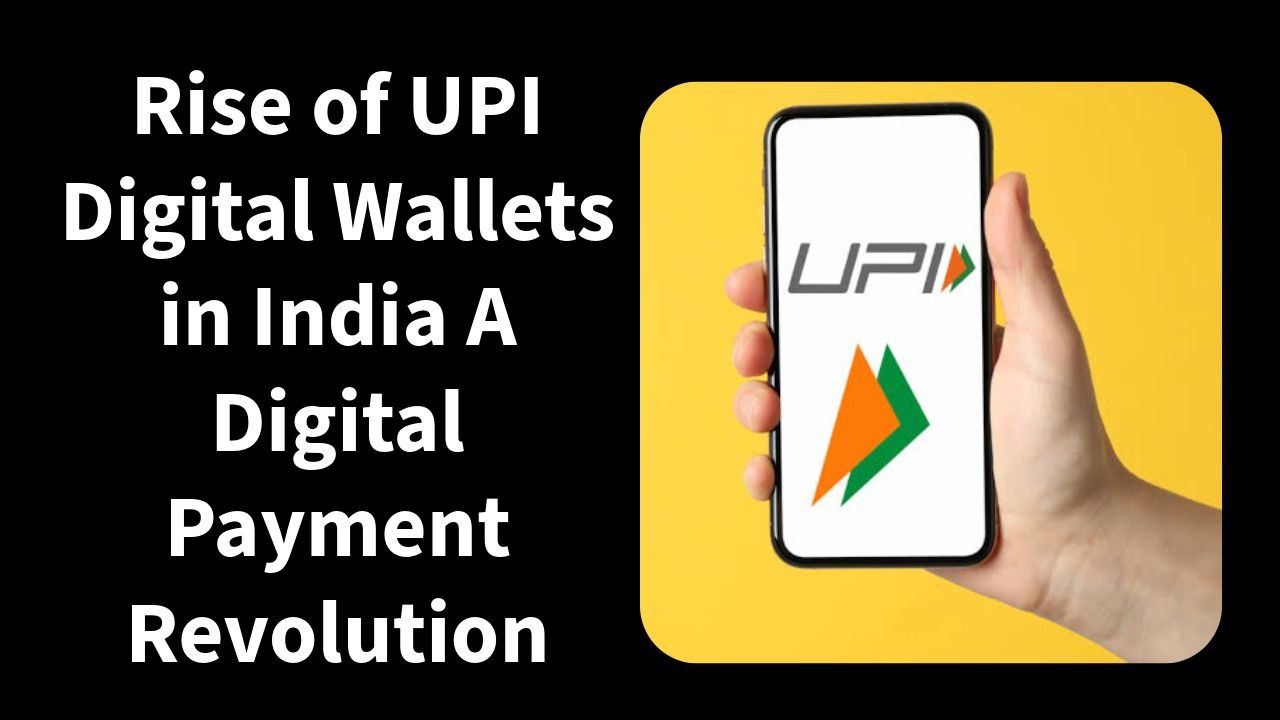Introduction:
Rise of UPI Digital Wallets in India A Digital Payment Revolution: India has witnessed a massive transformation in the way people handle money. From carrying cash and chequebooks to making payments with a single tap, the journey of India’s financial system has been remarkable. The rise of Unified Payments Interface (UPI) and digital wallets has played a central role in this change. Today, India is one of the world’s fastest-growing digital payment markets, and UPI is considered a revolutionary innovation that has reshaped the way transactions are done.
This article explores the growth of UPI, the popularity of digital wallets, government support, key players, benefits, challenges, and the future of digital payments in India.
What is UPI?
The Unified Payments Interface (UPI) is a real-time payment system developed by the National Payments Corporation of India (NPCI) in 2016. It allows users to link multiple bank accounts into one mobile application and perform instant money transfers, bill payments, and merchant transactions using a Virtual Payment Address (VPA), QR codes, or mobile numbers.
Unlike traditional payment methods, UPI does not require bank account details every time. It works 24/7, including weekends and holidays, making it highly convenient for users.
What are Digital Wallets?
Digital wallets are mobile-based applications that allow users to store money virtually and make quick payments for goods, services, or peer-to-peer transfers. Popular wallets in India include Paytm, PhonePe, Google Pay, Amazon Pay, and Mobikwik.
Wallets became popular before UPI because they simplified online transactions. However, with the rise of UPI, many wallet providers integrated UPI into their platforms, giving customers the flexibility of both wallet and bank-based payments.
Timeline of Digital Payment Growth in India
- Pre-2010 Era: Payments were mostly cash-based; debit/credit cards and net banking were limited.
- 2010–2015: Digital wallets such as Paytm and Mobikwik gained popularity for mobile recharges and bill payments.
- 2016: The launch of UPI and the government’s demonetization move created a push for cashless transactions.
- 2017–2019: Adoption of UPI skyrocketed with players like PhonePe, Google Pay, and Paytm adding UPI features.
- 2020–2022: COVID-19 accelerated the use of contactless payments, and UPI became the primary digital payment mode.
- 2023 onwards: India emerged as the world leader in real-time digital transactions, with UPI expanding globally.
Factors Behind the Rise of UPI & Digital Wallets
- Government Initiatives: 1)Demonetization (2016) pushed people towards digital payments. 2)Schemes like Digital India and Jan Dhan Yojana brought millions into the banking system. 3)BHIM App was launched by the government to promote UPI.
- Smartphone & Internet Penetration: Affordable smartphones and low-cost internet (thanks to Reliance Jio) enabled digital transactions across urban and rural areas.
- Simplicity & Convenience: With just a mobile number and UPI PIN, payments are done in seconds.No need to carry cash or cards.
- Security & Trust: 1)UPI transactions are regulated by RBI and NPCI, making them secure. 2)Biometric authentication and multi-factor security increased user confidence.
- E-commerce & Lifestyle Changes: Online shopping, food delivery, cab services, and subscription models required easy digital payment solutions.
Key Players in India’s UPI & Wallet Ecosystem
- PhonePe: One of the largest UPI players with strong merchant partnerships.
- Google Pay (GPay): Gained huge popularity with its simple interface and rewards.
- Paytm: Started as a wallet, later expanded to UPI, bill payments, and financial services.
- Amazon Pay: Integrated with the Amazon ecosystem for shopping and services.
- BHIM App: Government-backed UPI app for financial inclusion.
Benefits of UPI & Digital Wallets
- Instant Transfers: Money moves between accounts in seconds.
- Low/No Cost: UPI transfers are free or very low cost compared to traditional NEFT/RTGS.
- 24×7 Availability: Works anytime, anywhere.
- Financial Inclusion: Even small businesses and rural users can accept digital payments.
- Boost to Startups & SMEs: Digital payments make it easier for small sellers to reach customers.
- Transparency: Reduces black money and improves tax compliance.
Challenges in Digital Payments
- Cybersecurity Threats: Increasing cases of phishing, fraud, and scams.
- Digital Divide: Rural areas still face internet and infrastructure issues.
- Overdependence on Few Players: PhonePe and Google Pay dominate the market, raising monopoly concerns.
- Data Privacy Issues: With digital transactions, concerns about data misuse remain.
UPI vs Digital Wallets
| Feature | UPI | Digital Wallets |
|---|---|---|
| Source of Funds | Directly from bank account | Preloaded wallet balance |
| Charges | Mostly free | Sometimes fees for transfers |
| Adoption | Higher, due to bank integration | Moderate, mostly for small spends |
| Future | Global expansion & interoperability | Niche use for loyalty/rewards |
Future of UPI & Digital Wallets in India
- UPI Credit Integration: Linking UPI with credit cards will further expand usage.
- International Expansion: NPCI is partnering with global networks to make UPI payments available abroad.
- AI & Automation: Smarter fraud detection and personalized financial services.
- Rural Penetration: More awareness and infrastructure will bring rural India into the digital economy.
- Super Apps: Wallets and UPI players will become one-stop platforms for banking, insurance, investments, and shopping.
Important Links:
| National Payments Corporation of India (NPCI – Official UPI Page) | Click Here |
| BHIM UPI | Click Here |
| Digital India Program (Government Initiative) | Click Here |
| Reserve Bank of India – Digital Payments Guidelines | Click Here |
Conclusion:
The rise of UPI and digital wallets in India marks a historic transformation in the financial sector. What started as a simple experiment in 2016 has now become the backbone of India’s digital economy. With government support, technological innovation, and changing consumer behavior, India has successfully built one of the most advanced digital payment ecosystems in the world.
